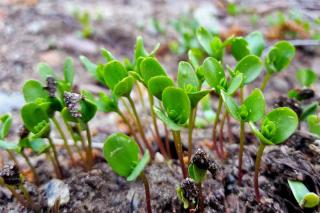

Who hasn’t yet dreamed of sowing a plant to see it sprout in their garden, admiring the magic of a seed bursting forth and growing to become an entire plant?
There is nothing that a gardener enjoys more than the pleasure of watching a seedling grow.
This growing technique is actually very easy, and is often the most affordable
and the most satisfying for all gardeners alike.
Although it is a plant’s most natural way of reproducing, sowing does need to follow certain rules that are easy and effective to maximize growth of the plant and provide the best environment.
Here are the methods that explain each type of sowing:
